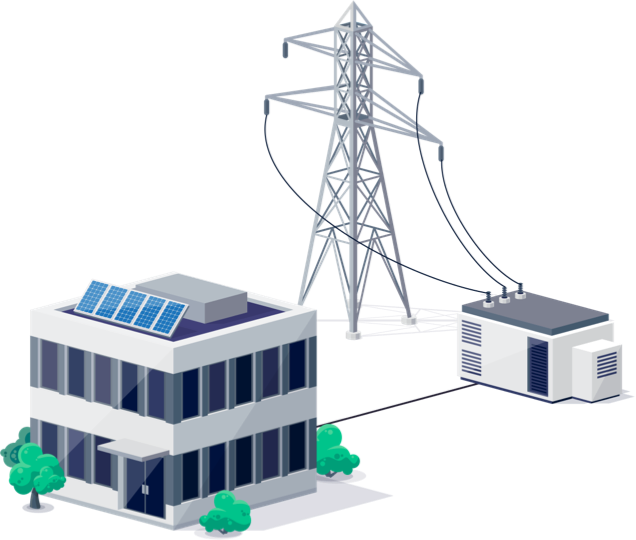Residents associations:
Shared self-consumption
Reduce the outlay of the installation by up to half and enjoy all the advantages of self-consumption.
Call us on
965 022 303
From 09:00 to 18:30
If you would prefer, we can call you back
What is shared self-consumption between homeowner’s associations?
Shared self-consumption in communities of owners allows any residential building to produce and consume its electricity by installing photovoltaic solar panels on the roof of the building.
As a large part of the consumption is covered by the energy generated by the collective self-consumption system, electricity bills are reduced and energy prices are less affected by fluctuations.

Commitment to shared self-consumption
REDUCES THE INVESTMENT IN THE INSTALLATION
Photovoltaic installation costs are shared by all owners and the community.
CARES FOR THE PLANET
It protects the environment, combats climate change and is part of the energy transition.
INCREASES THE PROFITABILITY OF THE COMMUNITY
Overproduction of electricity can be fed into the distribution network and compensated with financial rewards.
A SAFE BET FOR THE FUTURE
The installation of self-consumption increases the value of the building as it is an energy improvement system.
GRANTS AND SUBSIDIES
Some grants and subsidies will accelerate the amortization of solar panel installations.
In what ways do collective consumption installations typically work?
A collective self-consumption installation can have multiple uses, especially in a residential building.
BASIC
Intended to cover the consumption of communal areas (stairs, lifts, etc.).
Integral
For when its production is also geared toward meeting the needs of members’ homes or businesses.
Flexible
If only part of your neighbours or traders benefits from it (in which case it would be sufficient for a third of them to agree to install the system in a common area).
Do you have doubts about energy communities? Solve them here!
Neighbours who do not want to be part of the collective installation are not obliged to be involved, financially or otherwise, in the maintenance of the installation. Therefore, they do not benefit from the energy obtained.
Some autonomous communities promote the installation of solar panels in Resident Associations with financial aid. In the case of the Valencian Community, this subsidy can reach up to 45%, with a maximum amount of 100,000 €.
Yes, as long as you obtain permission from the community of neighbours. The space to be occupied by the solar energy installation is the rooftop, which is for community use. According to the Horizontal Property Law, 33% of the neighbours are required to agree as long as they represent 33% of the quotas.
Essentially, there are two types or forms of shared or collective self-consumption for communities of neighbours: shared self-consumption with surpluses and without surpluses.
The survey and installation are practically identical, except for a few details. Although we will design the shared solar facility in the most efficient way possible for optimal operation, the energy demand of the homes may fluctuate irregularly, leading either to a surplus in the electricity bill paid by the retailer, or an anti-surplus kit installed on the system. The most common situation, however, is that the surpluses are offset in the customer’s bill.
These forms of collective self-consumption were recently regulated by Royal Decree RD244/2019.
No work is required inside the home for the photovoltaic installation. It is a simple installation on the roof of the building.
As established in RD 244/2019, each participant has a percentage of the collective installation. This percentage is called the distribution coefficient (β) and is decided voluntarily by the participants. The requirements for sharing are:
- In this case, β should be a constant.
- To do this, the total power must be divided evenly among all participants, i.e. the β=1.
Current legislation includes three ways in which you can take advantage of a form of photovoltaic self-consumption shared with your neighbours:
- Installing solar panels on the roof or common roof of the same residential building.
- Install the photovoltaic system on an adjoining building, within 500 meters.
- Include 14 digits of the cadastral reference.
It requires the approval of one-third of the owners to install the system on the roof. Prior approval is essential to know how many neighbours would like to take part in the community photovoltaic installation.
Real opinions of our clients
- First of all, we provide a free survey of the electricity consumption of your community, the available surface area and the characteristics of the building.
- We design the most suitable installation for your community.
- We help you distribute the energy generated among the members of the community.
- We carry out the installation.
- We even take care of all the administrative procedures, validate the installation and apply for the necessary subsidies and grants.
Start your free study now